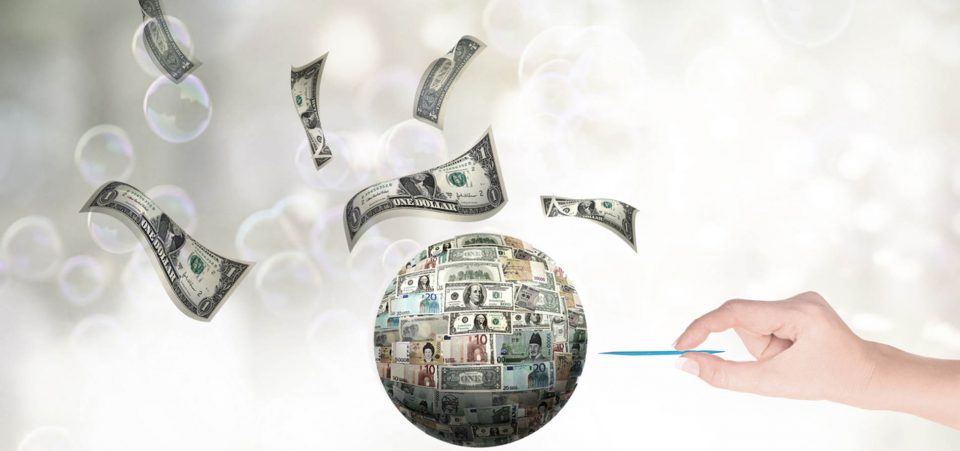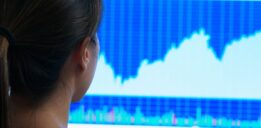Is the U.S. Stock Market Running on Fumes?
Some are suggesting that the U.S. stock market is running on fumes. But that’s only partially true. The U.S. stock market is running alright, but even the fumes have expired. The fumes would imply there is still some actual “fuel” to justify the soaring prices. Rather, the market is running on inertia, because the valuations are predicated on earnings that won’t deliver.
President and Chief Executive Officer of the Federal Reserve Bank of San Francisco, John C. Williams—”Fed Williams,” for short—could no longer hide his concern. The view from Fed Williams on the U.S. stock market was blunt. During an interview on Australian television, he said the stock market rally seems to be “running on fumes.” (Source: “Stocks Slammed After Fed Williams Warns “Market Rally Running On Fumes,” Zero Hedge, June 27, 2017.)
The noted banker addressed an audience of bankers in Sydney, Australia, including the European Central Bank (ECB) President, Mario Draghi. Fed Williams’s speech focused on a subject that hasn’t had much popularity lately: inflation. Williams believes that U.S. inflation will go up to two percent in 2017 or 2018.
Also Read:
5 Signs of a U.S. Economic Collapse in 2017
Stock Market Crash 2017? This Could Trigger a Stock Market Collapse
He seems confident that the U.S. has recovered, and even surpassed, full employment. In other words, Williams believes the U.S. economy has recovered. (Source: “Speed Limits and Stall Speeds: Fostering Sustainable Growth in the United States,” Federal Reserve Bank of San Francisco, June 26, 2017.)
Contradictions About Inflation and the Economy
Williams appeared optimistic about inflation, employment, and the U.S. economic outlook. Yet, he also warned that the United States and other developed countries are headed for an economic recession! Clearly, this last comment can only fuel concerns and discussions about the harms of U.S. rate hikes, which could push the economy into a recession.
The rate hikes might only assure that the U.S. dollar won’t fall too far behind the euro. The ECB has also started to talk about improving conditions, which might warrant a shift away from quantitative easing. But, neither Williams nor Draghi—nor Fed Chair Janet Yellen herself—have been clear about the risks of the rate hikes after so many years of zero-interest rates on both sides of the Atlantic.
One of the reasons inflation hasn’t moved has to do with oil. Oil prices, that is. The apparently relentless decline in oil prices has raised concerns about low inflation, which remains stubbornly below the Federal Reserve’s target of two percent. Yet, here we have the Fed wanting to raise nominal interest rates to keep inflation in check. There’s an evident contradiction.
But oil prices aren’t going to go up anytime soon. It’s unclear, but the Saudi-led political and economic blockade against Qatar might have had, among a list of goals and motives, one of boosting oil prices. Qatar remains isolated, but oil has dropped in price to a three-month average of about $47.50 a barrel—down from the earlier average of $55.00 (Source: “Goldman Sachs slashes oil price projection amid US shale surge,” CNBC, June 29, 2017.)
Everyone Insists on Avoiding the Word “Bubble”
Still, the inconsistent economic growth analyses, no matter how optimistic, cannot get around the main problem. Investors are feeling a palpable unease with every point the Dow Jones Industrial Average edges closer to the next big target of 22,000 points. Just like a major earthquake or volcanic eruption, there are warnings before a major stock market crash.
The October 1929 crash didn’t happen all at once. After reaching record heights, it stuttered, lost, and gained, and then gave it all up in two sessions. But, in 2017, there should be fewer excuses to get caught in the avalanche. We have much more information and it’s constantly being updated with facts and analysis.
If we were to extract a “juice” from all the information and facts available to investors now, the result would be “bubble” juice. The tech stocks, or so-called FANGs (Facebook Inc (NASDAQ:FB), Apple Inc. (NASDAQ:AAPL), Netflix, Inc. (NASDAQ:NFLX) and Google) have been pulling the other stocks to new heights. But, while some of these represent actual high-earning potential—even if not as high as to justify their valuations—others have surfed the wave far beyond their abilities.
For every chicken that lays a golden egg, there are a hundred that make an omelet. In other words, investors should be concerned that the tech bubble 2.0 will burst as it happened in the 2000s. The levels at which the stock prices have been pushed warrant, at the very least, a pause for reflection.
There is the risk that investors have become addicted to easy gains. Meanwhile, geopolitical turmoil and economic uncertainties increase. The big banks have not spoken about a bubble explicitly. They know that the moment they do, it will burst. Fed Williams has given as close to that warning, without actually putting the pin on the bubble, as possible.






